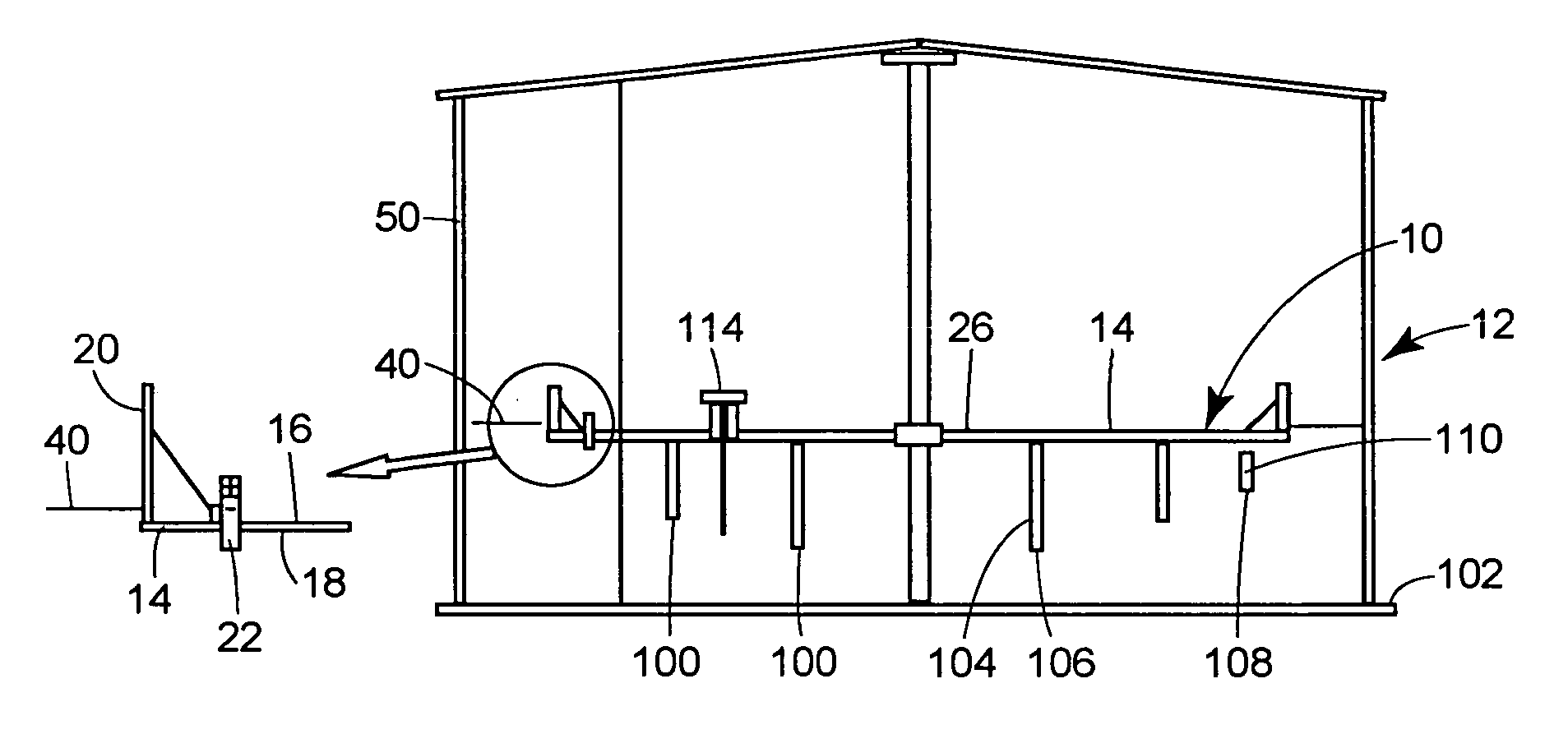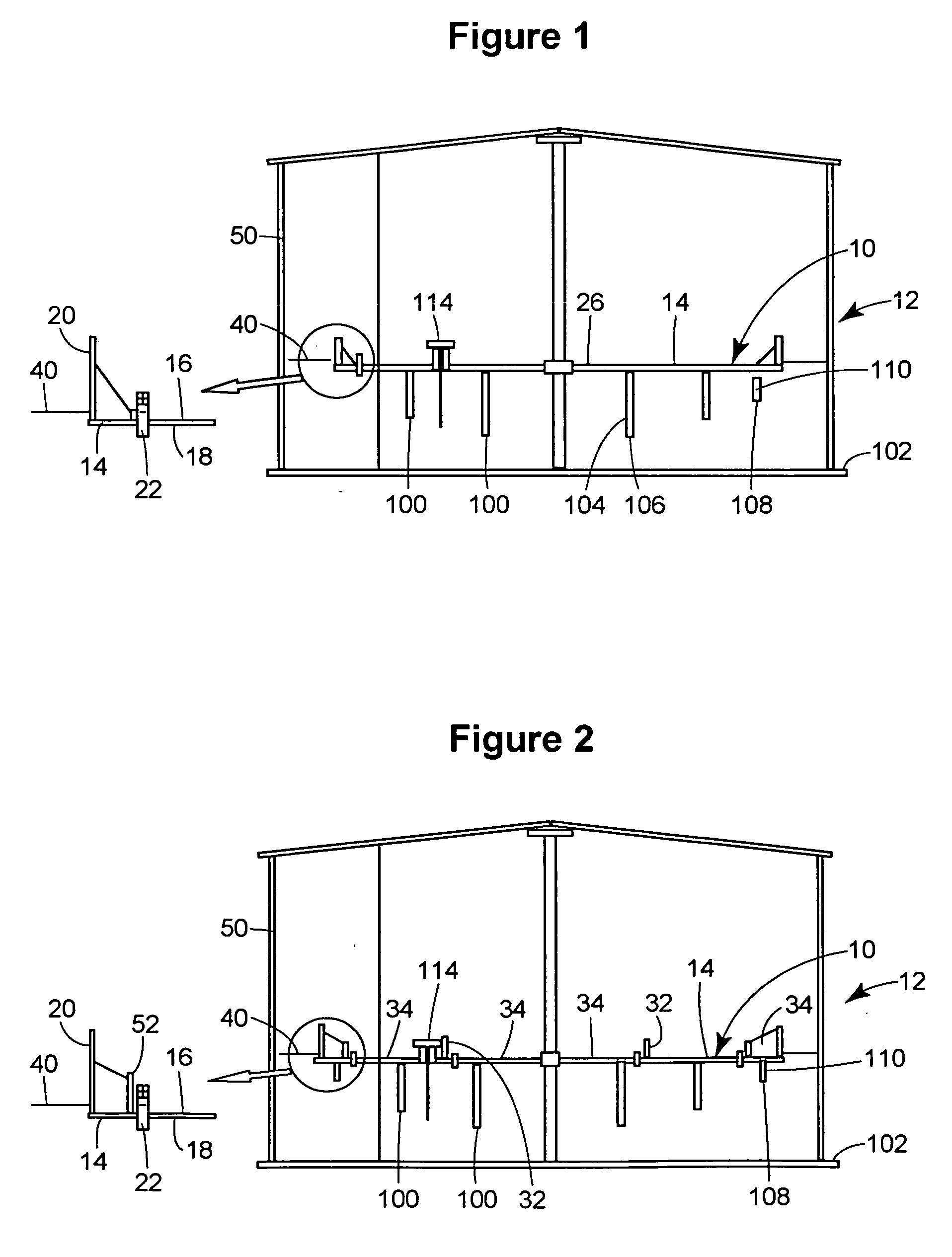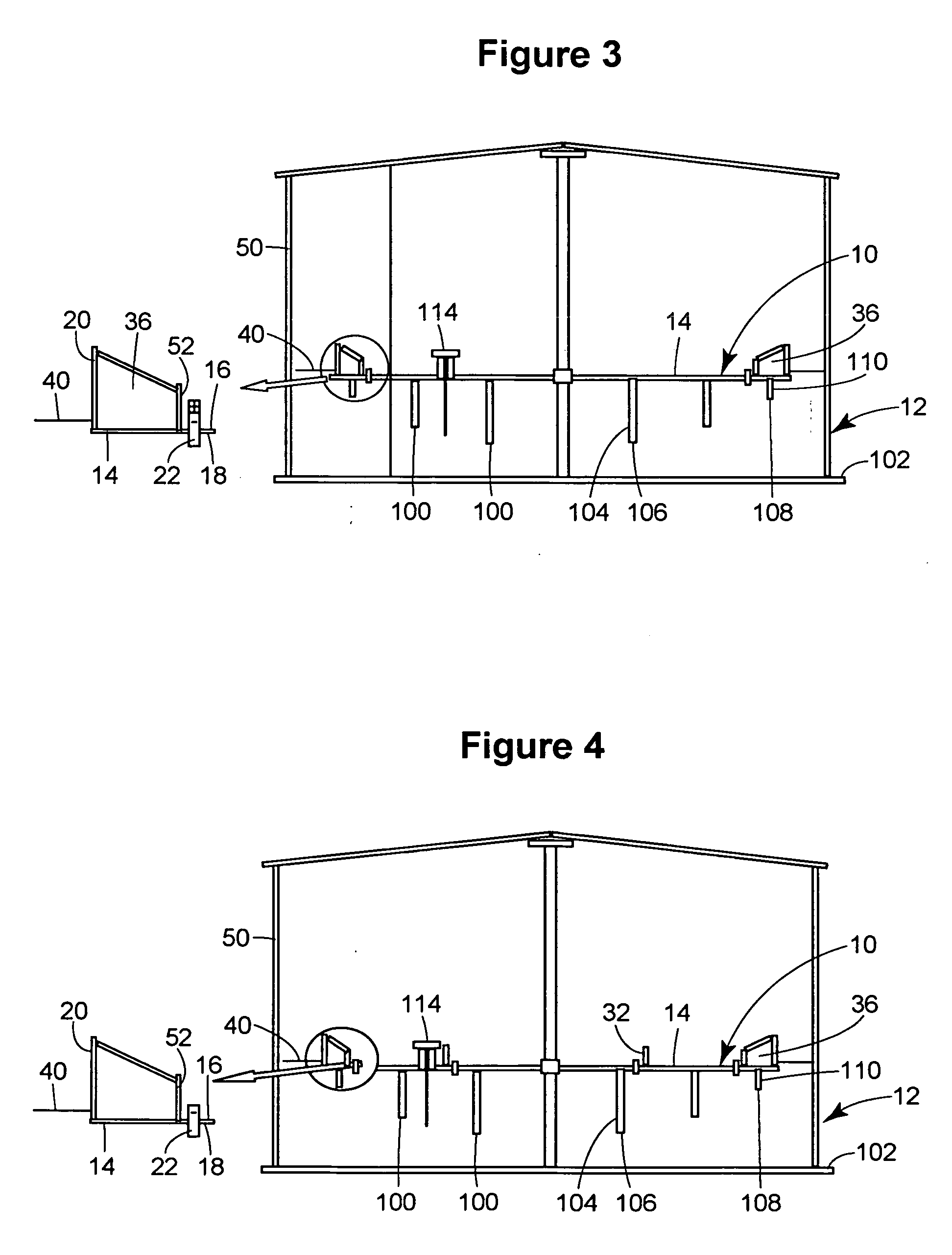Storage tank with self-draining full-contact floating roof
a floating roof and storage tank technology, applied in the direction of lids, non-removable lids/covers, packaging, etc., can solve the problems of odor, health, safety or fire hazards of other liquids, especially those containing sulfur, and vapor escape from stored hydrocarbon-based liquids can present health, safety or fire hazards, etc., to increase the useable capacity of the storage tank, reduce the load, and the effect of thin and lighter roo
- Summary
- Abstract
- Description
- Claims
- Application Information
AI Technical Summary
Benefits of technology
Problems solved by technology
Method used
Image
Examples
Embodiment Construction
[0028]Examples of storage tanks with the new self-draining floating roof can be seen in the figures. Each illustrated roof 10 is part of a storage tank 12 that can be used for storing liquids at atmospheric pressure. Each illustrated floating roof has a deck 14 with a top surface 16, a bottom surface 18, an outer rim 20, and a plurality of drains 22.
[0029]The roof 10 of the tank 12 illustrated in FIG. 1 is a relatively thin pan roof. In conventional pan roofs, the deck central portion is typically around 3 / 16″ thick, and the rim is typically around 15-22″ high. The central portion 26 of the illustrated roof is only about ⅛″ thick, and the peripheral rim 20 is approximately 12″ high. The illustrated roof is made of steel, although similar roofs could be made of other materials, such as aluminum, composite material, or other non-metallic material.
[0030]The use of lightweight stainless steel materials may be economical when storing corrosive products. A stainless steel roof offers seve...
PUM
 Login to View More
Login to View More Abstract
Description
Claims
Application Information
 Login to View More
Login to View More - R&D
- Intellectual Property
- Life Sciences
- Materials
- Tech Scout
- Unparalleled Data Quality
- Higher Quality Content
- 60% Fewer Hallucinations
Browse by: Latest US Patents, China's latest patents, Technical Efficacy Thesaurus, Application Domain, Technology Topic, Popular Technical Reports.
© 2025 PatSnap. All rights reserved.Legal|Privacy policy|Modern Slavery Act Transparency Statement|Sitemap|About US| Contact US: help@patsnap.com



